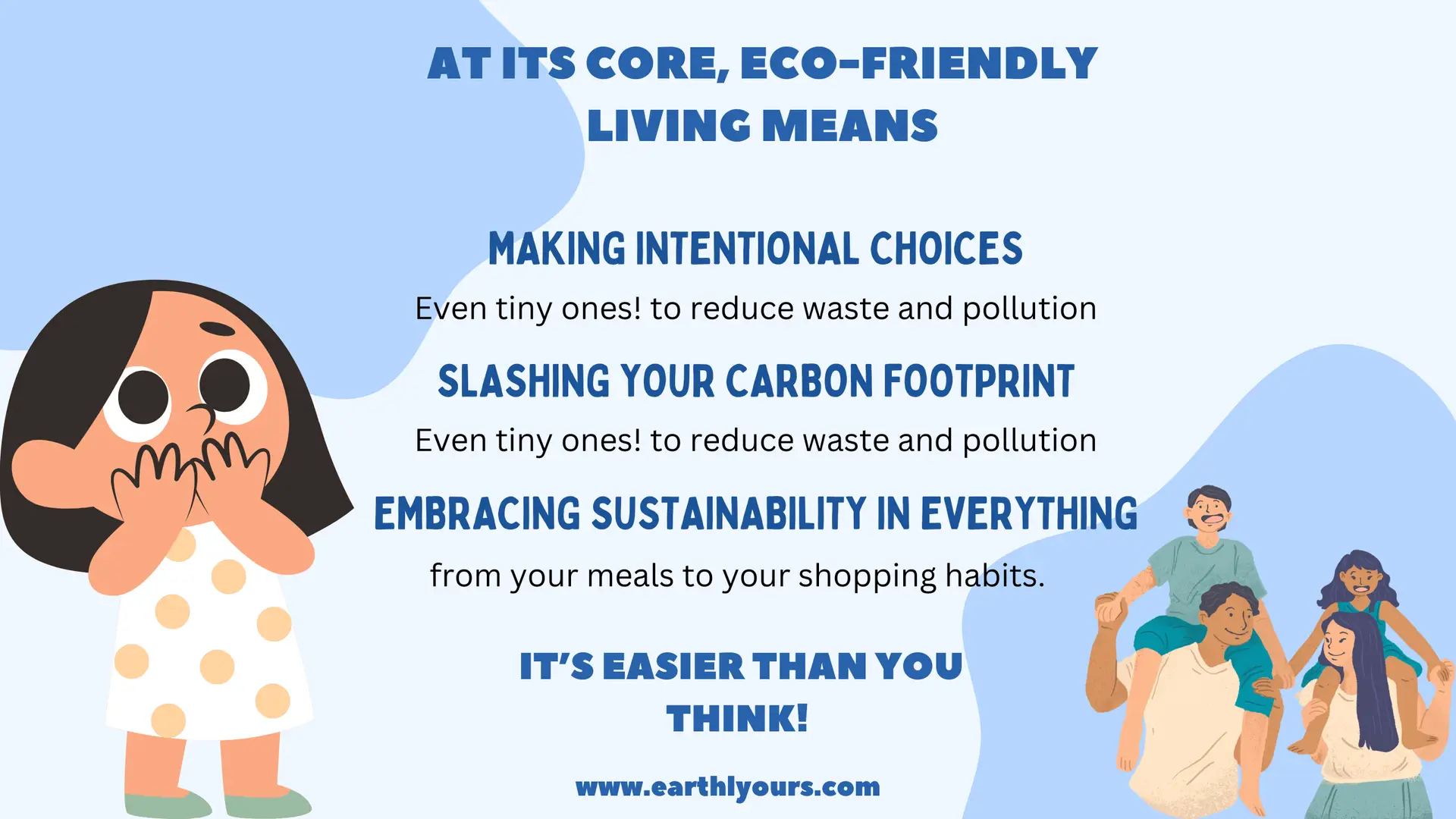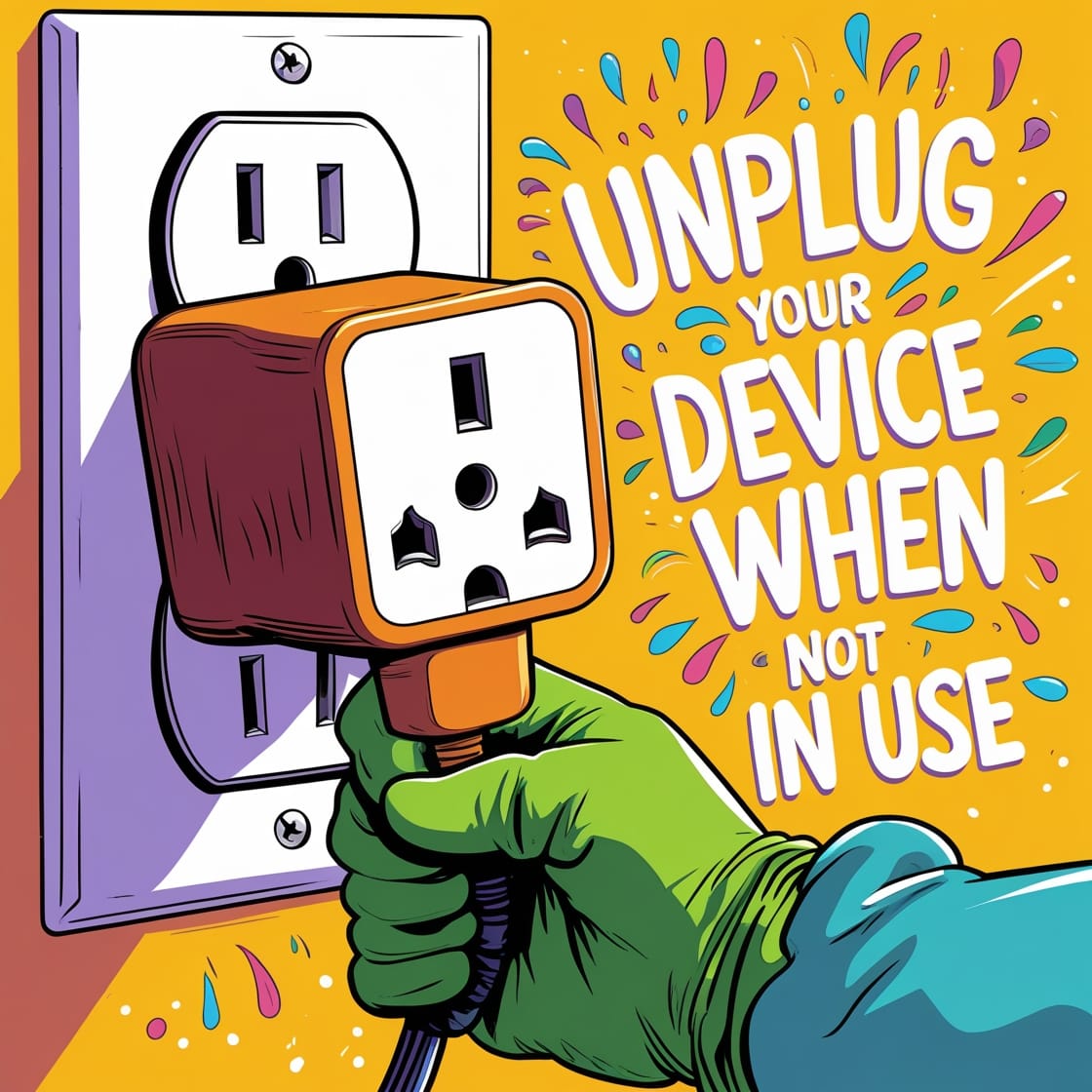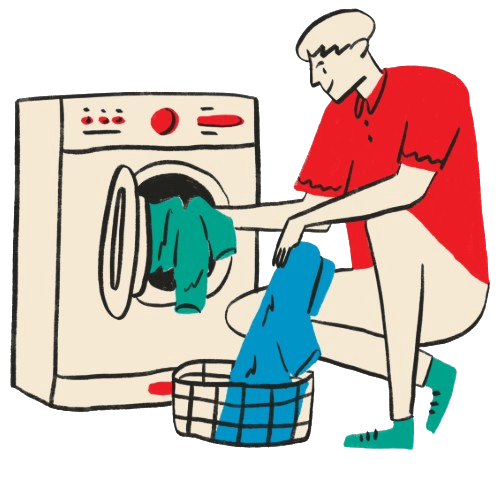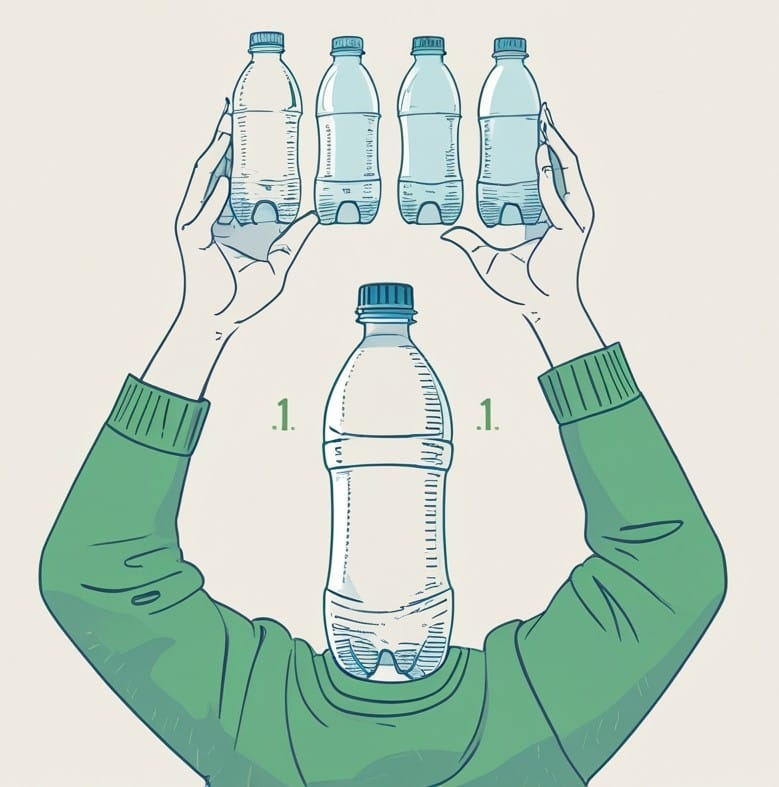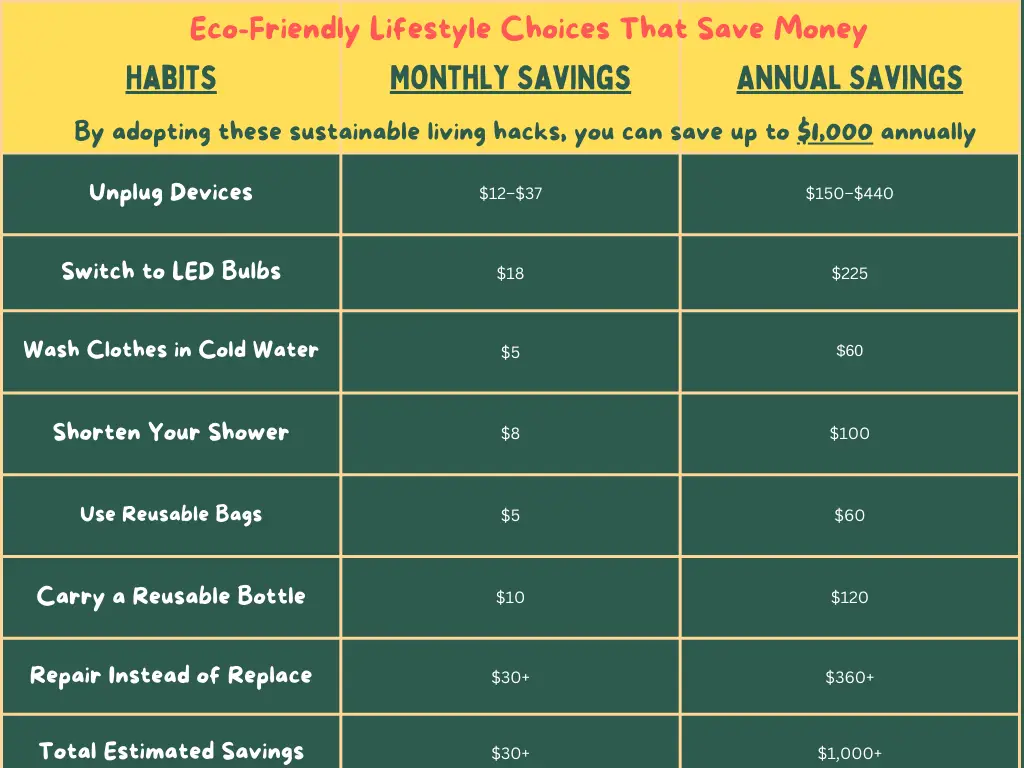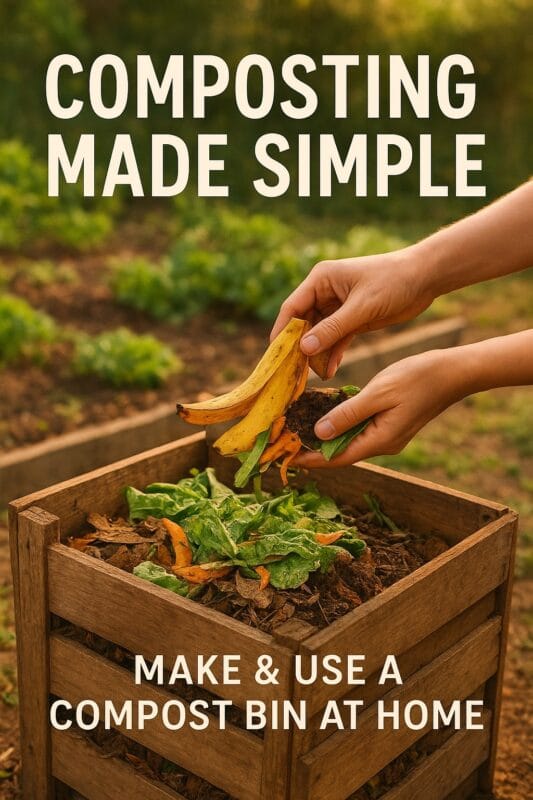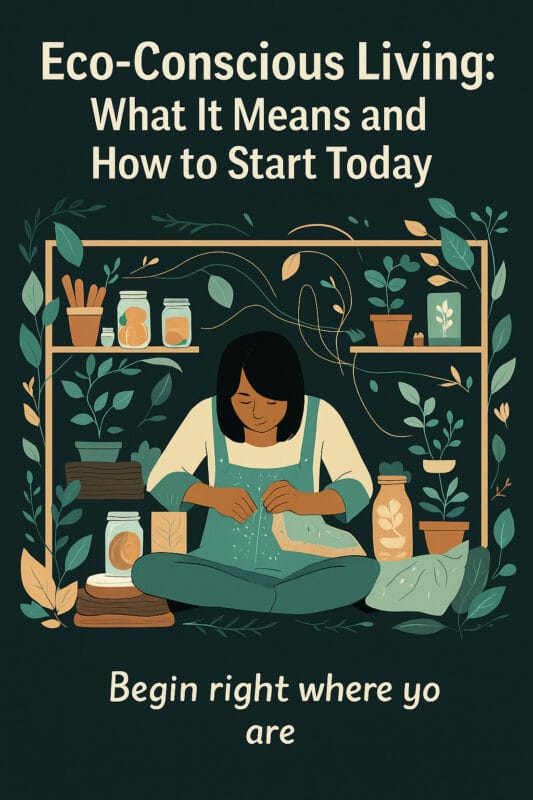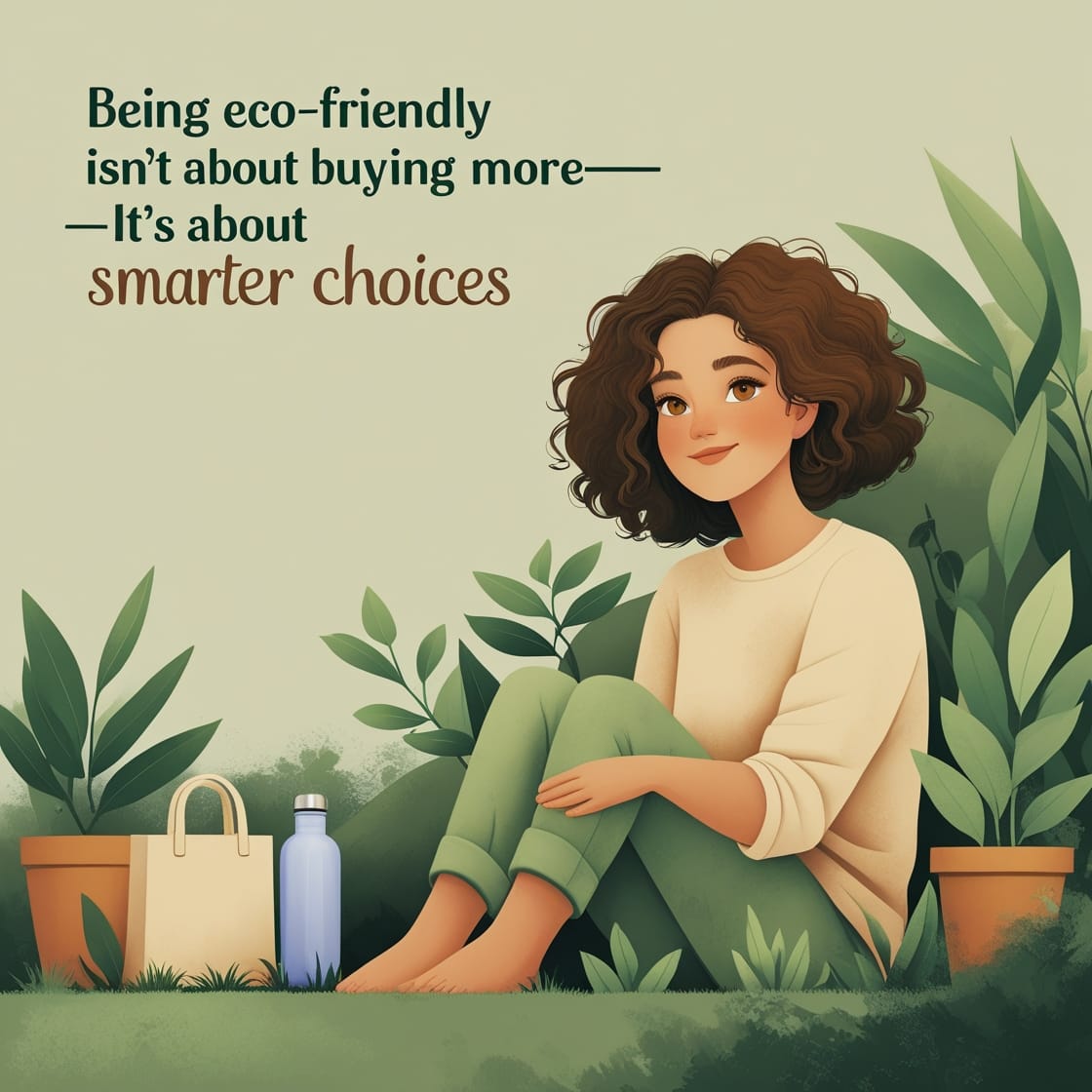
Living an Eco-Friendly Life: Choose Eco-Conscious Living over Consumerism
Living an Eco-Friendly Life Isn’t About Buying More—It’s About Conscious Habits Forget the cart. Start with your heart—and your daily choices
Have you ever felt like living sustainably means spending more money on “green” products? You’re not alone. Many believe that an eco-friendly lifestyle requires expensive reusable items, solar panels, or switching to all-organic products.
But here’s the truth: being eco-friendly isn’t about buying more—it’s about making smarter choices with what you already have.
Sustainability isn’t about perfection or expensive products. It’s about intentional, mindful living that reduces waste, conserves resources, and protects our planet—without breaking the bank.
Living an eco-friendly life isn’t about buying expensive ‘green’ products but smarter, intentional choices.
In this guide, we’ll show you 13 simple steps to reduce waste, slash your carbon footprint, and save money. Perfect for beginners, these eco-friendly habits prove sustainability starts with what you don’t buy
Table of Contents
What Does Eco-Friendly Living Mean?
Forget textbooks or rigid rules—eco-friendly living is simply being aware of how your daily choices impact the planet. It’s tossing that burger wrapper into a bin, not on the sidewalk. It’s carrying your morning coffee in a reusable cup instead of grabbing a disposable one. It’s asking, “Does this action harm or heal the Earth?
How to live more eco-friendly
To live an eco-friendly life isn't about filling your cart with green-labelled products—it's about tuning into your core. At its heart, eco-friendly living means making intentional choices, no matter how small, that reduce waste, cut pollution, and protect the planet.
Whether it’s skipping plastic, shortening your shower, or reusing what you already have, these everyday actions matter. Real change begins not in a store aisle—but in your daily habits, your mindset, and your values.
Because living an eco-friendly life isn’t about what you buy. It’s about how you choose to live.
Eco-Conscious Living vs. Eco-Friendly Living—Are They the Same?
Do these terms confuse you? Not anymore! While they are interconnected and complement each other, they start at different points.
Eco-conscious living begins with awareness—understanding the impact of our actions on the environment and making mindful choices to reduce harm. For example, did you know that over 1 million plastic bottles are purchased every minute worldwide, yet less than 10% are recycled? Imagine you’re walking down the street, feeling thirsty. Instead of buying a plastic bottle, an eco-conscious mindset would remind you to carry a reusable one whenever you leave the house. Small, thoughtful choices like this help reduce plastic waste, and over time, this awareness naturally transforms into eco-friendly living.
Eco-Friendly Living vs. Sustainable Living
We hope you now have a clear understanding that eco-conscious living is the first step—it begins with awareness, which gradually shapes eco-friendly living through small, mindful habits. But the journey doesn’t stop there!
With so many misconceptions floating around, environmental terms can often be confusing. For instance, have you ever wondered whether eco-friendly living and sustainable living are the same? While they are deeply connected, they play different roles in your journey toward a greener lifestyle
However, if we break the myth that being eco-friendly is just about buying "green" products, it becomes clear that eco-friendly living is the foundation, and sustainable living is the long-term result. Both are part of the same journey—one that starts with mindful habits and leads to a truly sustainable lifestyle.
Eco-friendly living
Living an eco-friendly life is about making better daily choices, like reducing waste, carrying reusable bags, and minimizing plastic use.
Example
Carrying a reusable water bottle instead of buying plastic ones.
Sustainable living
It happens when those habits become deep-rooted, shaping your long-term lifestyle and reducing your environmental impact on a larger scale
Example
If you already own a plastic bottle, use it until it wears out, then switch to a long-lasting reusable one. Make it a lifelong habit and inspire others to do the same!
Eco-Friendly Habits vs. Sustainable Habits
If you start improving your daily habits, they naturally evolve into eco-friendly habits—often sparked by external influences. Sometimes, a small moment of awareness can shift your perspective.
I experienced this firsthand while shopping with a friend. As we entered the market and started picking up items, I absentmindedly collected four different plastic bags—single-use plastic that would eventually add to the waste problem. But my friend, to my surprise, pulled out a reusable shopping bag.
Curious, I asked, "Where did you get that?" He smiled and said, "I made it from unused cloth at home." That moment struck me—I was impressed, a little ashamed, but most importantly, inspired. It made me realize that being eco-friendly isn’t about making drastic changes; it’s about simple, mindful choices that gradually improve our daily habits.
But what about sustainable habits? They don’t develop overnight. When eco-friendly habits become second nature, they evolve into sustainable habits. My friend didn’t just use a cloth bag once—he made it a way of life. And that’s when you can truly say, "I’m leading a sustainable lifestyle.
Why Living an Eco-Friendly Life Starts With Habits, Not Products
In today's world, "eco-friendly" is often misunderstood. Many believe that switching to bamboo toothbrushes, metal straws, or reusable bags is enough to be eco-friendly. But here’s the truth: eco-friendly living doesn’t start with products—it starts with habits. Blindly buying "green" products without a change in mindset often leads to overconsumption, defeating the core principle of sustainability: Reduce.
Companies with an eco-friendly tag often mislead eco-conscious consumers into filling their shopping carts, making sustainability seem like a trend rather than a lifestyle. But true sustainability isn’t about what you buy—it’s about how you live.
Awareness First: Eco-Consciousness Before Action
Eco-friendly living begins with awareness, not shopping. Before making changes, you must understand how your daily habits impact the environment.
For instance, did you know that over 1 million plastic bottles are purchased every minute worldwide? Less than 10% of them are recycled. This knowledge alone might make you rethink carrying your own reusable bottle—whether it's plastic, glass, or metal—because the key is reducing waste, not just replacing materials.
Change Comes From Small, Daily Habits
Once you become aware, your actions naturally start to shift.
You may find yourself:
- Turning off the tap while brushing your teeth
- Shortening your shower to save water
- Reusing shopping bags instead of accepting plastic ones
- Reducing food waste by planning meals mindfully
These small, conscious choices form the foundation of a truly sustainable lifestyle.
Consistency Turns Habits Into a Lifestyle
Sustainability isn’t about one-time efforts. When you consistently reduce, reuse, and rethink consumption, these habits become second nature
You no longer have to remind yourself to turn off unnecessary lights or compost food scraps—it just becomes a part of who you are. That’s when eco-friendly living transforms into sustainable living.
Sustainable Living = A Mindset, Not a Shopping Cart
Many brands market "eco-friendly" products as the solution, but true sustainability isn’t about buying more—it’s about using what you already have until it deteriorates, buying only when necessary, and making long-term changes.
The goal is to minimize waste, not just switch materials
Remember
You don’t need to follow sustainability. When you build the right habits, sustainability follows you
Sustainability is Built on 3 Key Habits
REDUCE
Less energy, Less plastic, Less waste
The greenest thing you can do? Buy less. Every product—whether labeled “eco-friendly” or not—takes energy, water, and resources to make, ship, and eventually dispose of. The less we consume, the less we waste, and the lighter our footprint on the planet. Sustainability starts with what you don’t buy.
RE-USE
Be creative and repurpose what you already own
The easiest way to go green? Use what you already have. Reusing isn’t just sustainable—it’s free, effortless, and reduces waste instantly. From repurposing glass jars to giving old clothes a second life, every item reused is one less in a landfill.
RECYCLE
Sort and recycle properly to keep waste out of landfills.
Recycling helps, but it’s not a free pass. Many items you toss in the bin never actually get recycled—contamination, mixed materials, and processing limitations send tons of "recyclables" straight to landfills.
The real solution? Reduce, reuse, and recycle only as a last resort.
Is Living an Eco-Friendly Life Expensive?
A recent study by Deloitte found that 52% of consumers haven’t adopted a sustainable lifestyle simply because they believe eco-friendly alternatives are too costly. A slightly higher number said they’d happily make the switch—if only the products were more affordable
Let’s pause right there.
This tells us one thing loud and clear
We’ve been sold the wrong idea of sustainability.
Somewhere along the way, being eco-friendly got wrapped up in a shopping cart—reusable straws, organic cotton bags, bamboo everything.
But here’s the truth:
Being eco-friendly doesn’t require a single penny.
It starts with a habit, not a product.
It's about:
- Using what you already have
- Reusing and repairing
- Reducing your consumption (Not buying more things—even if they're labelled "green." labelled)
- Buy only when it’s truly needed
- Make conscious choices, not commercial ones
Let Your Actions, Not Your Spending, Define Your Impact.
So next time you're thinking of “going green,” remember:
You don’t need to spend to be sustainable.
You just need to start.
13 Ways to Live Eco-Friendly Without Buying a Thing
How to Create an Eco-Friendly Lifestyle: 6 Simple Habits
Unplug Devices When Not in Use
Many electronics continue to drain power even when turned off. This is called phantom energy and can add up to $150–$440 per household annually.
Wash Clothes in Cold Water
Washing machines consume a lot of energy, but switching to cold water can
Shorten Your Shower
Reducing shower time by just 2 minutes can save 5 gallons of water per day!
Bring Your Own Shopping Bags
Reducing shower time by just 2 minutes can save 5 gallons of water per day!

Money Saved: $50 per year (Some places charge for bags!)
Plastic Avoided: 360 bags/year per person (3,600 for 10 people).
If 100 people did this: 36,000 plastic bags avoided/year (Enough to cover a football field!)
Cost to implement: $0—just reuse old bags!
Avoid Plastic Water Bottle
Reducing shower time by just 2 minutes can save 5 gallons of water per day!
Repair Instead of Replace
Instead of throwing away broken items, consider repairing or repurposing them
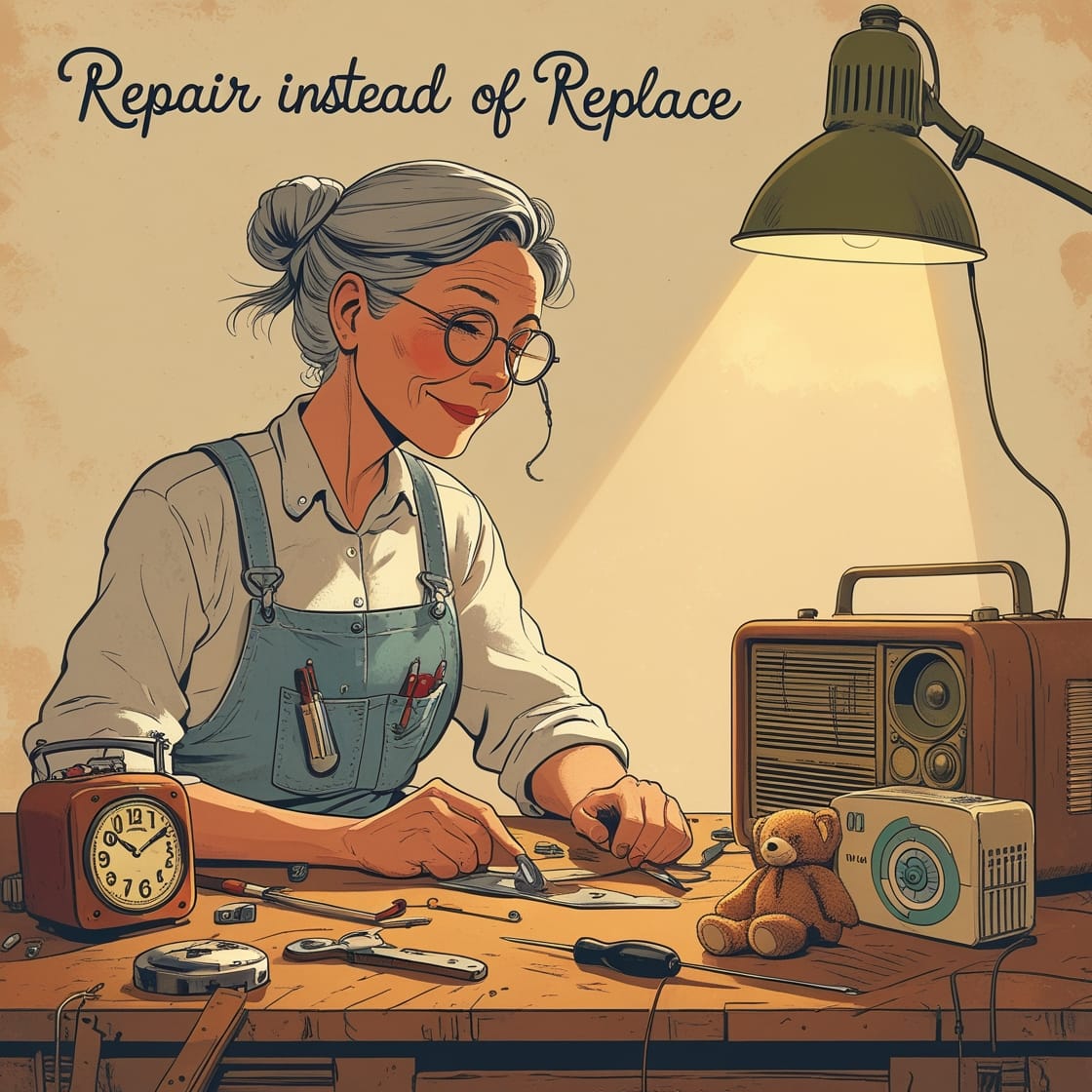
Money Saved: $500 per year on clothes and household items.
Waste Reduced: 30 repaired items/year per person (360 for 10 people).
If 100 people repaired: 3,600 items saved from landfill (Enough textiles to cover 100 football fields!).
Cost to implement: $0—just mend or upcycle what you own!
Top 7 Eco-Friendly Lifestyle Choices That Save Money
By adopting these sustainable living hacks, you can save up to $1,000 annually
FAQs
How can I start living an eco-friendly lifestyle?
Is sustainable living expensive?
What are the best sustainable living hacks for beginners?
How can I start living eco-friendly on a budget?
What are easy eco-friendly swaps?
Our Blog
There are many variations of passages of lorem ipsum available
Eco-Conscious Living: What It Means and How to Start Today
-
Posted by
 EARTHLYOURS
EARTHLYOURS
- 0 comments
SoilMix Calculator
-
Posted by
 EARTHLYOURS
EARTHLYOURS
- 0 comments
Your Soil is Your Plant’s Soul: Why You Should Create Your Own Soil Mix
-
Posted by
 EARTHLYOURS
EARTHLYOURS
- 0 comments
